Fintech: 3 reasons why you didn’t like online banking
Fintech: Online Banking Adoption Rate
Online banking has seen tremendous growth and success in the Canadian market with an approximate 50% penetration rate. These numbers are constantly climbing and we could expect higher rates every year as the services become more user-friendly.
Online banking awareness is at an all-time high with 96% of people stating that they have at least heard about the services that are provided such as e-transfer, paying bills, depositing cheques and more.
Fintech can act as an extension for the existing physical spaces. For example, you could complete simple, mundane tasks online while using the available in-branch services to make more complex decisions
That being said, with the banking industry still shifting its focus from brick and mortar operations to digital servicing, it’s important to us at Caddle to determine what suggestions you would make to optimize this technology.
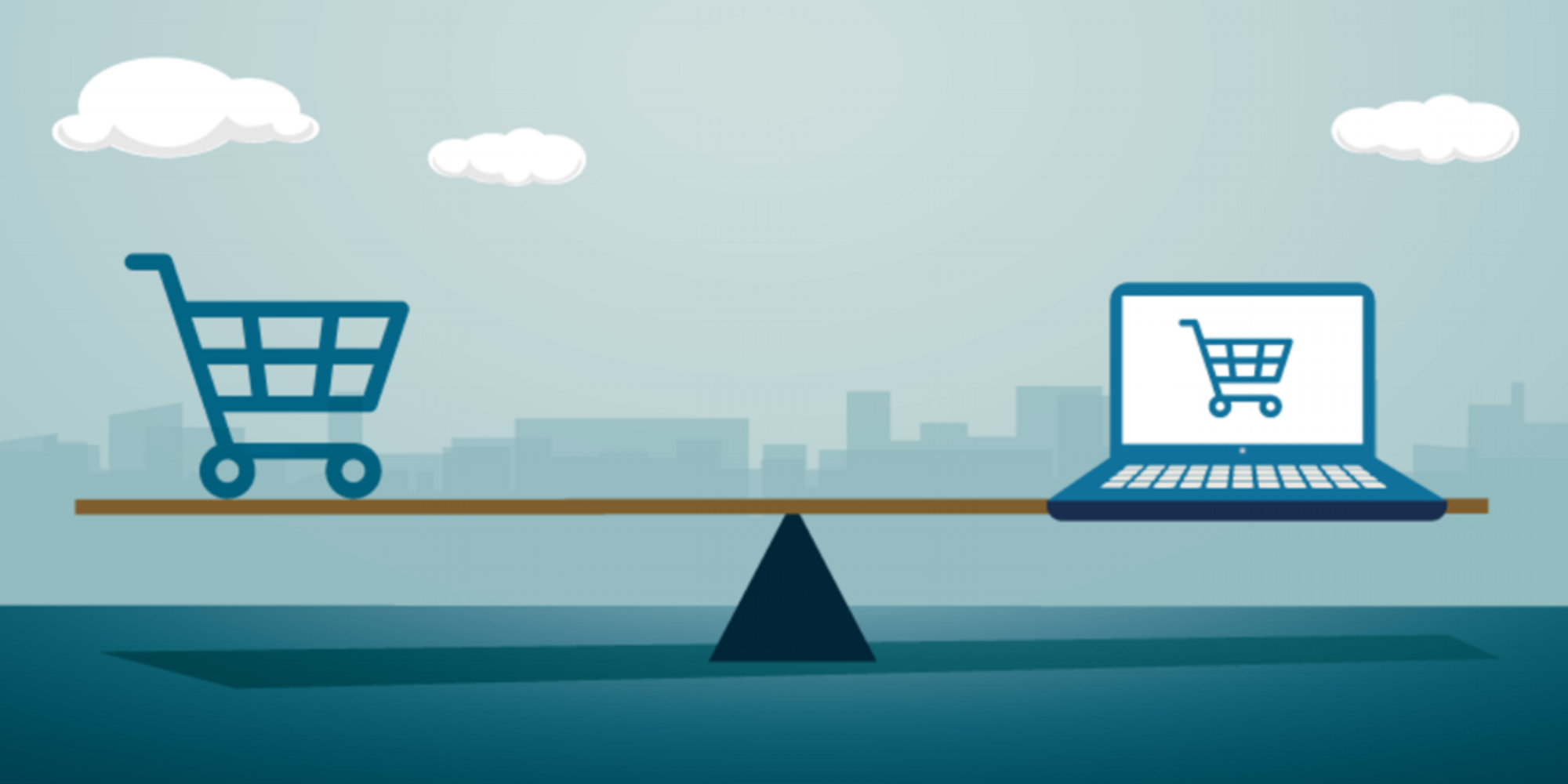
We got to hear from you!
Some of you still may be wondering, what is Fintech? It’s a combination of “Finance & Technology”. Fintech includes a variety of different services including:
- Insurance
- Transaction delivery
- Peer to peer lending
- Loans
- Digital wallets
- Online banking
So how does Caddle fit in? Caddle is a data insights company that has a passion for understanding market trends which can be translated to the market industry leaders for the benefit of understanding the buying behaviors of their consumers.
We took a look at what our members had to say about Fintech. With an average of about 8000 survey respondents approximately 80% of respondents were female, 50% were Millennials, and 40% were from Ontario. We hope that using this sample size we can garner a better understanding of Fintech and help provide the best insights.
Financial technology (Fintech) is used to describe new tech that seeks to improve and automate the delivery and use of financial services.
Based on the results we determined that our members are not supporters of this new technology for three major reasons.
1) Fintech: Digital Banking Awareness
We conducted a digital bank survey that was focused on determining our member’s awareness and preferences when it comes to conducting their finances online. For this particular survey, we are talking about banks that are solely online with no available storefronts.
We found that more than half of our members were familiar with digital banking. That being said, 54% did not use digital banks and the next best option was Tangerine. All those Toronto Raptors commercials are paying off!
What is interesting is that digital banks have a multitude of advantages that traditional banks don’t. For example, they can offer you higher interest rates and lower banking fees because they have cheaper operating costs than brick and mortar locations.
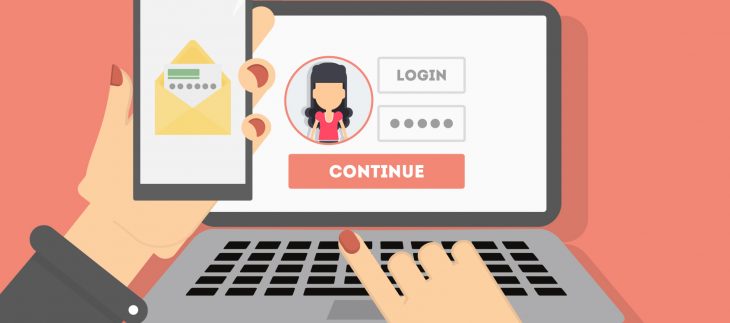
Fintech: Why not make the switch?
If people are willing to sacrifice earning more money there must be some underlying issues. Banks have invested plenty of money into targeting Millennials and onboarding them to digital platforms.
What is causing people to be so skeptical?
This could be a result of respondents feeling neutral when it comes to their personal info and data being safe with digital banks. Does that mean you heard about the Capital One security breach?
Members simply had no interest when it comes to switching to a digital bank. This could be a result of banks failing to address your concerns:
- Where do I deposit my cash?
- How do I talk to a real person?
- What type of insurance coverage do I get?
2) Fintech: The Banking App Experience
The findings from the banking app experience survey helped us identified that only 34% of members had a “good” experience when conducting transactions online. This includes them logging on a few times a week to check the status of their accounts.
Members were comfortable completing simple transactions such as:
- Transferring money (e-transfer)
- Paying bills
- Checking account balances

Fintech: Online Banking Stops Here
The previous results were anticipated but when asked if members conducted any other activities like communicating with advisors, applying for loans or mortgages, or opening accounts, the majority said they don’t complete any activities.
This is important because it is evident that members are not comfortable making certain decisions using online platforms whether or not it is an issue of privacy, lack of financial guidance, or inaccessibility.
3) Fintech: The New Digital Wallet
How many of you carry cash? Probably not often right? What if I told you now you don’t have to carry your wallet. The future is here, all you have to do is tap your phone to make a purchase! (ie: apple pay)
To be honest, it’s an interesting experience and there are valid points made from each side of the spectrum.
67% of you said that you don’t currently use a digital wallet.
Here are the following reasons why our members are skeptical about making the leap to digital wallets:
- Safety and security. Members disagreed with the following statement, ‘my personal information and money is safe with digital wallets’.
- Over half of the respondents were Millennial’s (1978-1996). A large portion of these members are not digital natives.
- There is a lack of awareness and perceived functionality.
- Digital wallets are a relatively new concept (less than 10 years). This technology is still in the early adoption stage.
- Out of the respondents that did use digital wallets they preferred Apple Pay.

Fintech: Digital Transactions Experience Steady Increase
According to a study completed by Payments Canada, they found that “in 2016, the number of contactless transactions increased significantly, to almost 2.1 billion transactions worth $67.1 billion.
This represents an 81% and a 78% increase over 2015, in both volume and value terms (respectively).”
At Caddle, we feel that the lack of presence and usage of digital wallets lies in the hands of the organizations. There is just simply a lack of education and promotion surrounding the benefits associated with this technology.
Hotspot shield also conducted a survey and found similar results.
“A strikingly small 12 percent had ever used any of the applications at all. Of those who had used the technology, PayPal was the runaway favorite, while second-place Google Wallet had been used by only 8 percent of the survey subjects”.
Consequently, our respondents displayed minimal interest in converting their handheld wallets to be linked to their mobile devices.
What’s that old saying? If it ain’t broke, don’t fix it?
The Saftey Guide
For those of you that are going to be cashing in those Caddle earnings and saving more money by shopping online, we have a safety guide just for you. Get your pen and paper ready. Whether or not you will be browsing Amazon or taking advantage of Cyber Monday/Black Friday, this guide will protect your money!
- Review your bank statements (every month)
- Don’t make purchases on PUBLIC wifi
- Secure your home wifi
- Use two-factor authentication (2 passwords for your banking)
- Change the password for your email/bank after the holidays
- Don’t share your PIN(s) with anyone
- Look for spelling errors or inconsistencies on websites
- Use 3rd party sources (PayPal) to secure your funds
In Canada alone, there were over 1.2 million in compromised funds last holiday shopping season with a total of 1179 victims.
Now that you have got some good tips and tricks we want to hear from you! Check out our daily surveys on the Caddle app and share some of your insights using this link. Whats are some of the holiday gifts that you will be purchasing? Are you going to be shopping online or in-store? We want to hear it first!
Thanks for reading! Follow us on social media and register online to have access to more blogs and surveys.
[simple-author-box]
How long does it take plastic to decompose – longer than you think
How long does it take plastic to decompose?
To be completely frank, that’s a difficult question. Modern plastic has really only been in production for about 50 years. But a lot of those plastics are still floating around the world today. The lifetime of single-use plastics varies from product to product, but this article aims to give a ballpark range for single-use products like plastic water bottles, plastic bags, and plastic straws.
What is plastic?
The first synthetic plastics were developed in early 1907. What gives plastic its strength and flexibility is the length of the molecule chains from the polymers that make plastic. The longer each chain of molecules, the stronger, more lightweight and flexible the plastic will be. When petroleum and fossil fuels were shown to produce longer chain polymers this then began the shift from natural to synthetic plastics.
Why is plastic bad?
Nowadays the majority of plastics used every day are made of polyethylene terephthalate (PET), which is a petroleum-based synthetic plastic.
What’s the harm in that you ask? Well, you know the stuff you put in your car that makes your car go? That’s made out of petroleum too and we all know how bad that is for the environment. So think about how bad that effects our landfills, oceans, and the world as a whole. Probably not the best remedy.
With most plastic being primarily petroleum-based for its strength, it also means that the majority of plastics won’t through biodegradation like natural products. Meaning it’s pretty damn tough to get rid of the stuff because it lives on this planet for quite some time.
How long does it take a plastic bottle to decompose?
No question about it, plastic is pretty bad and is made of some questionable materials that harm the planet. So, how long does this plastic stuff stick around for? Well, according to some researchers, they estimate that due to the PET used in objects like plastic bags, plastic water bottles and plastic straws, it could take upwards of 450 years to decompose.
Yep, a rather frightening estimation. Let’s break that down so it really hits home for you. Breaking that down is equivalent to 5,400 months, or 21,600 weeks, or 1,971,000 days just for one single plastic bottle to decompose. Now think about how many plastic water bottles are on this planet. Probably not so thirsty anymore now, are you? Check out some alternatives here.
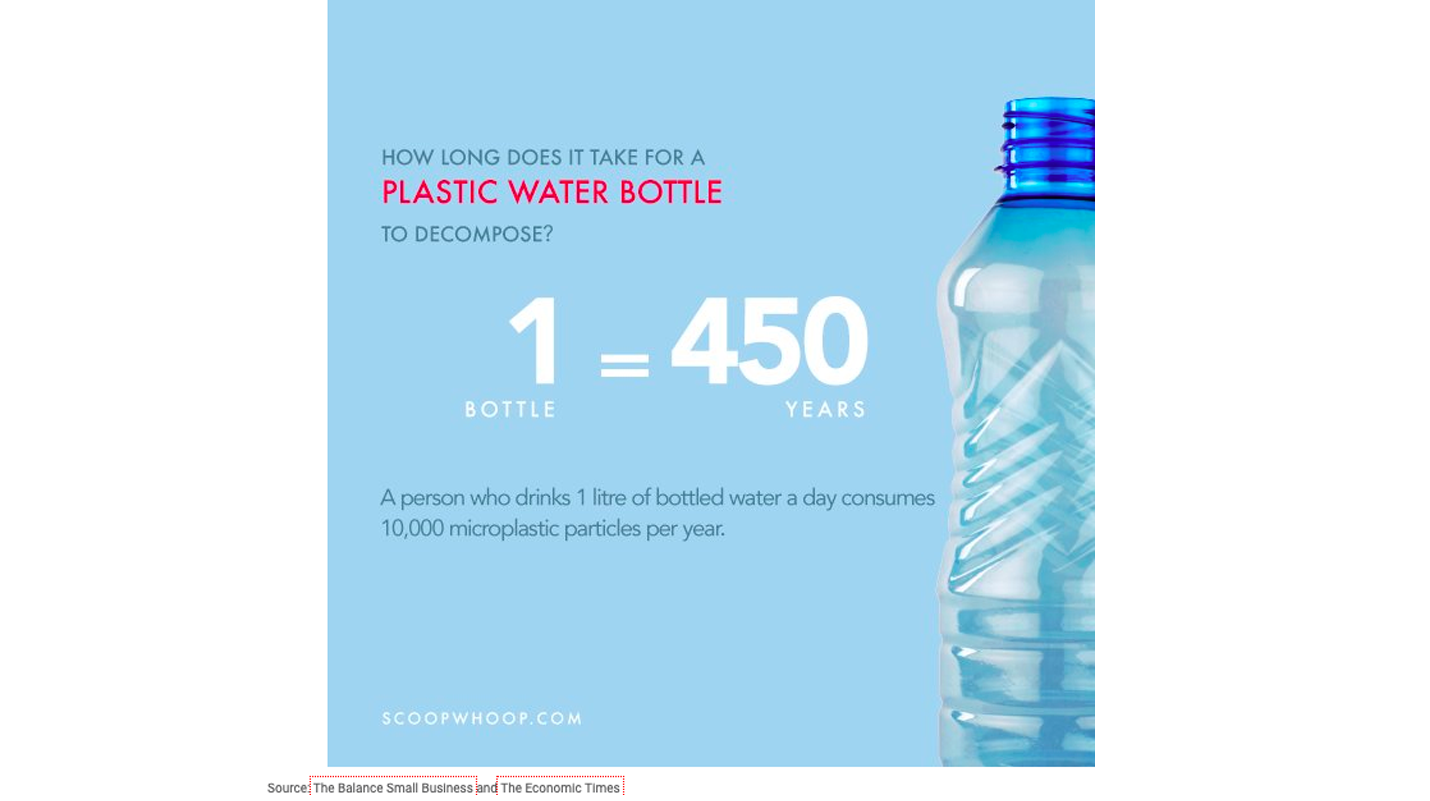
How long does it take a plastic bag to decompose?
So, what about plastic bags, how long do they take to decompose?
Answer: between 10 and 1,000 years.
This is a rather frustrating statistic. If it takes 1,000, that’s concerning. But if it takes only 10 years, that’s not so bad– is it?
Guess again. It all depends on how much ultraviolet radiation a plastic bag gets from the sun. If it’s baking in the sun, the bag could break down a lot sooner (i.e., 10 years) than a plastic bag that’s hidden from the sun (i.e., 1,000 years).
Even if it takes 10 years, this is still concerning. Polyethylene in plastic bags does not biodegrade. It simply becomes brittle, causing the bag to break down into tiny plastic pieces. In other words, there may not be a plastic bag floating in the wind or oceans. Instead, there are now tiny microplastics being scattered around the world.
To fix this, maybe it would be best to go back to paper bags for our shopping needs. The alternatives are endless. You can find more great, simple options here.

How long does it take a plastic straw to decompose?
What was once the most convenient tool is now going through a shift for being one of the most hated plastic products – plastic straws.
It will take approximately 200 years for a plastic straw to decompose. Much longer than the time they have been in modern existence.
So, what can we do? Well, continuing to throw our plastic straws into the garbage would be a step in the opposite direction since they’re not easily recyclable due to their size. For starters, I would suggest alternatives. There are always alternatives, like stainless steel, paper, or biodegradable straws. Better yet, don’t use a straw at all! or just go without a straw. Go cold turkey on the drinking apparatus!
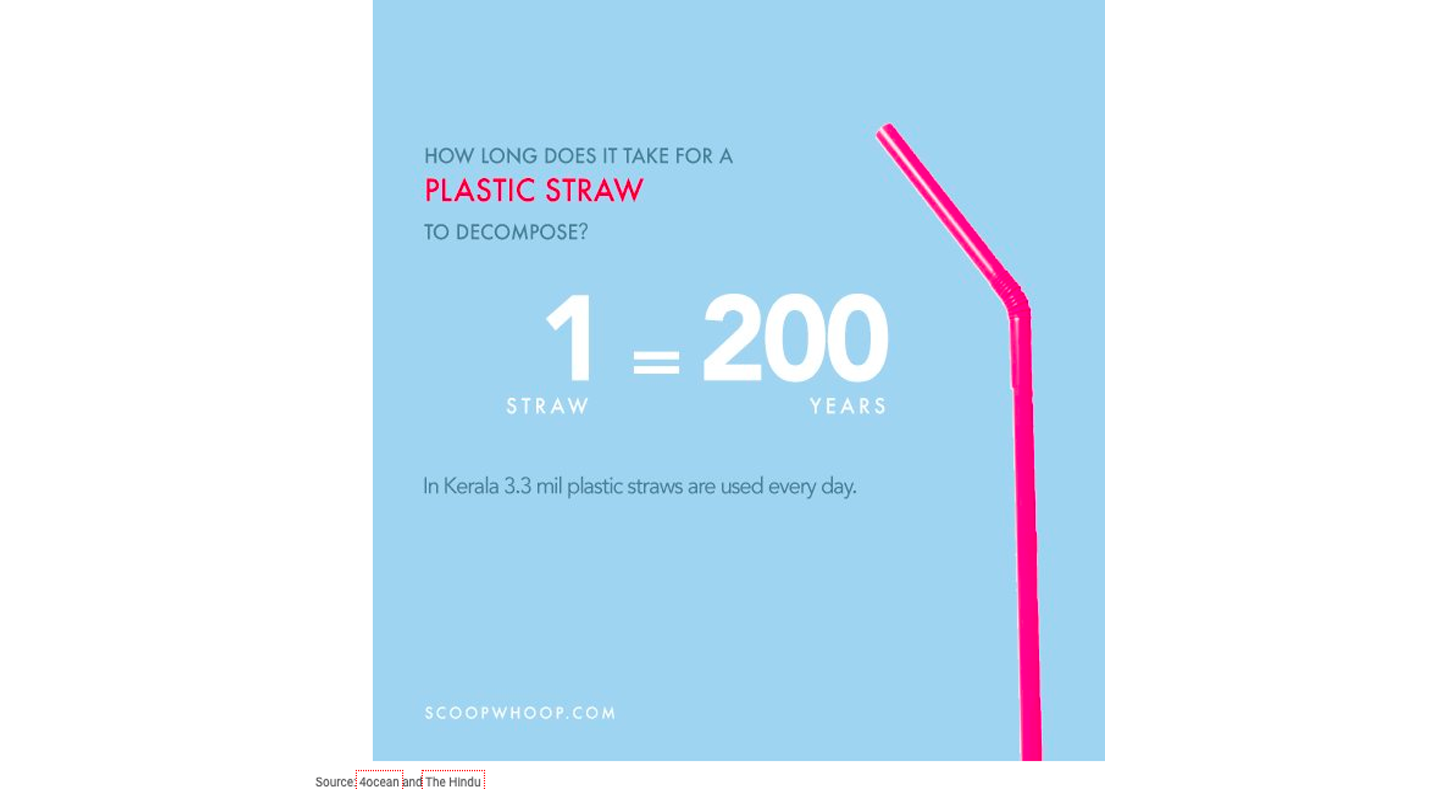
What impact does recyclable plastics having on this situation?
Scattered around this plastic world, 12 million tonnes of plastic waste and materials end up in the oceans each year moving us closer and closer to the plastic world we are trying to escape from. We need to be better.
Right now, we as Canadians recycle only 11% of all plastics with the other 89% being tossed into our landfills, oceans and or being incinerated into harmful fumes. Recyclable plastics can drastically change this statistic by removing all these harsh plastics from the environment and utilizing them to make others. If done correctly, those plastic grocery bags can be made and remade into the same bags or other plastic products instead of spending the next hundred years in a landfill or fixed to some innocent sea creature.
Dark Mode Hockey?
What if the NHL went Dark Mode like your cell phone?
It may sound like sacrilege to die-hard hockey fans, but wouldn’t it be easier for viewers to follow a white puck against black ice than the current standard of a tiny black puck on an ice surface?
A recent survey found a surprising number of Canadians would be willing to watch our national game in a radical new light.
Given the recent run of Dark Mode software releases, which are designed to improve customer experience, the team at Caddle decided to investigate what other Dark Mode experiences might be of interest to Canadians. We decided to start with Canada’s favourite game – hockey.
Our survey received more than 8,000 responses from Canadians of all ages to gauge their receptiveness to watching NHL games in Dark Mode.
Here’s what we learned:
- 28% of overall respondents are interested in NHL Dark Mode, compared to 40% opposed
- 31% of respondents who identified as serious hockey fans – those who watch at least one game per week – would be interested in NHL Dark Mode. This segment of respondents is over-indexed
- Younger Canadians are more open to Dark Mode hockey than older Canadians.
- 36% of Gen Z interested in NHL Dark Mode
- 30% of Millennials interested in NHL Dark Mode
- 26% of Gen X interested in NHL Dark Mode
- 22% of Baby Boomers interested in NHL Dark Mode
- 27% of Silent Generation interested in NHL Dark Mode
“This research may not pave the way to black ice hockey rinks across the country, but what shows very strongly is that Canadians have a huge appetite for new experiences – even when it comes to a game like hockey with very strong traditions,” says Caddle CEO Ransom Hawley.
So what do you think – would you be interested in making the switch to black and white? Let us know your thoughts in this form.
Plastic Water Bottles: Your guide to ditching single-use plastic
Plastic water bottles
After the rise of plastic water bottles, companies recognized its potential as an indestructible material that you could drop, kick, smash, or leave on the shelf for weeks.
What they forgot to consider is how the heck is this material going to break down or decompose, and at what cost?
We are now only considering this a problem after we have spent over 11.7 billion dollars on 8.8 billion gallons of water. To put that in perspective, we use 2 million water bottles every 5 minutes.
The average adult’s body is composed of at least 55-65% water. So I’m not advocating for you to stop drinking water, but I challenge you to rethink the way you drink it. (Let us know how you use plastic by clicking here.)
We are going to cover 5 key areas:
Plastic water bottle pollution
If you want to talk about multitasking, plastic water bottles are the all-time champions! Not only do they pollute during the process of extracting and processing fossil fuels, they even get you at the back end. Approximately only 10% of water bottles are effectively recycled. Pollution not only impacts our climate, but it can also lead to severe health risks for humans and animals.
“Studies estimate there are now 15–51 trillion pieces of plastic in the world’s oceans — from the equator to the poles, from Arctic ice sheets to the seafloor”.
It’s extremely difficult, if not impossible, to remove all the plastic once it has made its way into the ocean. Our solution to this problem needs to begin on land. Fish, sea birds, and other marine mammals are ingesting thousands of plastic microfibers each year.
Government Intervention: We have gone too far
Campaigns and petitions are pushing for plastic(s), especially water bottles, to be considered pollutants. Governments and activists are beginning to ban together in their fight to eliminate single-use plastics. We have already seen policy changes in San Francisco, Washington, Kenya, India, France, Bangladesh and even in our own backyard.
“The Justin Trudeau-led government also decided to take necessary measures to reduce plastic pollution in Canada. Canadians are trying to ban plastic bottles, bags, and straws in as early as 2021. However, in Montreal, there is already a ban on plastic items”.
How long does it take for a plastic bottle to decompose?
So do plastic bottles even break down since they are so resilient? In fact, they do… after about 1000 years. Once they break down, you guessed it, they leak harmful chemicals into the ocean or soil. Sunlight or UV rays are often the most effective in breaking down plastics that didn’t make it to recycling facilities.
You might have read about the uninhabited island where over 4000 pieces of plastic were found, ranging from water bottles to plastic straws. Maybe you have seen your favorite restaurants and coffee places decrease prices when you bring your own mug. An issue that has been overlooked for years is coming back to bite us.
Decades after our existence people will still be cleaning up the water bottles that we are using today. Even Aquaman’s Jason Momoa has taken the initiative to help eliminate single-use plastic on a global scale.
Tap water or bottled water?
There has been an on-going debate surrounding tap water versus bottled water. A study was completed testing over 1000 water bottles from 103 different companies. The test was conducted to determine if there was a significant increase in water quality and purity in relation to tap water. The national resource of the defense council said that only one-third of the companies actually exceeded industry standards. In other words, bottled water is no different than tap water.
Environmental research provides evidence that bottled water is falsely advertised as pure and filtered. Despite this information, the plastic water bottle industry is still generating approximately 2.5 billion in revenues.
How is this even possible with what we know about plastics?
Bottled water companies attempt to capitalize on consumer’s fears of tap water suppliers. Brands such as Fiji, Smart Water, and Perrier have built their success by selling a desirable brand image.
Consequently, these products are feeling the pressures of increased sustainability as we try to minimize our environmental impact.

Still skeptical about tap water? Go to DrinkSoma and get a sleek-looking water filter!
Reusing Plastic Water Bottles
Now that we are on a roll, let’s look at another myth. People often think that reusing plastic bottles has severe side effects. Some people even say its considered cancer-causing.
This was deemed a rumor that was traveling around the web and you can visit the cancer society website to receive the full story. Keeping this in mind, do you ever hear people throwing around the term BPA?
If you’re like me, you nod your head but have no idea what they are talking about. BPA is found in many hard plastics. Its exposure to heat and extreme cold over long periods of time can cause the plastic to break apart into your beverage.
Now, this won’t cause any drastic, life-altering symptoms, but why take the risk? Many organizations offer BPA free bottle solutions. Make sure you identify this feature when buying your reusable bottle.
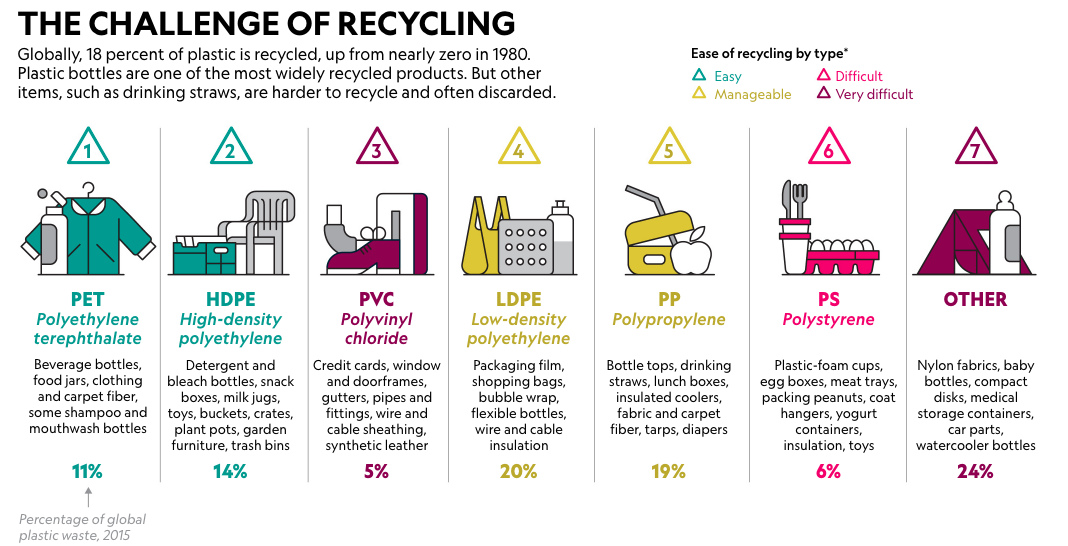
Recycling Plastic Water Bottles
Recycling water bottles is often a difficult procedure with strict rules and guidelines that need to be followed. We are all guilty of using plastics and maybe you are drinking out of a plastic bottle right now. However, I don’t think we should take all the blame.
We lack education and awareness surrounding topics such as plastics and pollution. Take the CBC article for starters. Canadians are paying millions of dollars in sorting costs because we are throwing items in the blue bin that aren’t even recyclable!
You mean I can’t put my old T-shirt in the blue bin? Seriously, they find this stuff every day! When you do use plastic products make sure you stay informed regarding what items are considered recyclable.
Plastic Alternative: Canned Water
Aluminum is much easier to recycle than plastic bottles. It can be recycled more times than plastic, it requires much less energy during this process, and there are often incentives to return cans. Aluminum is recycled 50% of the time compared to plastic bottles at 10%.
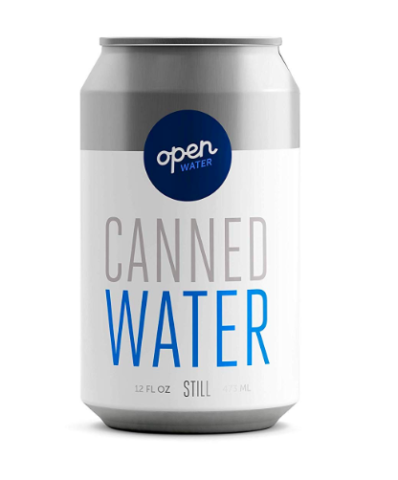
Plastic Alternative: Boxed Water
Boxed water not only looks great but it’s recyclable and biodegradable. If you still want the convenience of buying at any store make the switch to box water!

Plastic Alternative: Water Filter
Water filters used to be big, ugly, and annoying to maintain. Companies like Soma or Brita have taken this industry by storm giving filters a sleek design and becoming a must-have in the household.
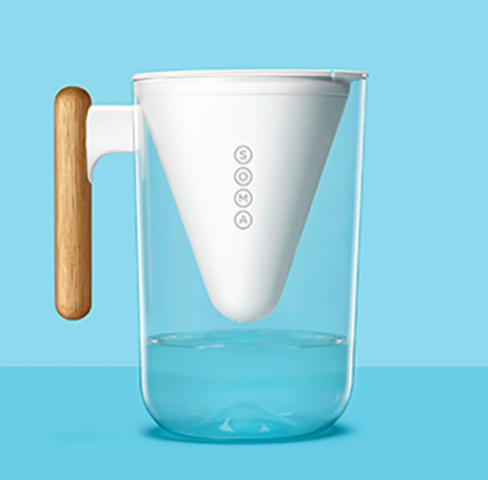
Plastic Alternative: Tap Water
You are already paying for it why not utilize it! You can pair it with the previously mentioned filters or just put it in a glass.
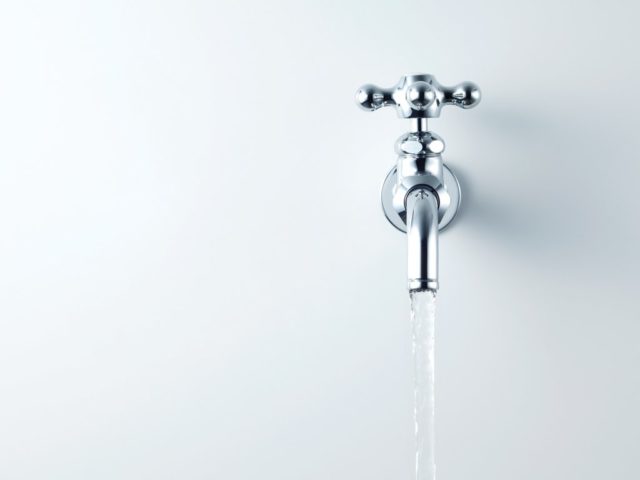
Plastic Alternative: Stainless Steel Bottle
An easy to clean, durable, and customizable option to take your water on the go. They come in a variety of different sizes and colors to fit your needs. Say goodbye to spending $5.00 a day on disposable bottles.
[simple-author-box]

Plastic Straws: Canada’s Plastic Ban Explained
Why Canada is banning plastic straws. Here’s what to use instead
When it comes to plastic straws, Canada is taking action.
On June 10, 2019, Prime Minister Justin Trudeau announced the government’s intention to ban plastic straws, bags and all other single-use plastics by early 2021 in efforts to reduce non-recyclable waste.
The Prime Minister stated that, “Canadians know first-hand the impacts of plastic pollution, and are tired of seeing their beaches, parks, streets and shorelines littered with plastic waste”.
On top of this, several companies in Canada have also pledged to ban plastic straws in their facilities—including coffee chain Starbucks, which will eliminate all plastic straws from its stores worldwide by 2020.
While experts suggest the straws themselves only make up a tiny fraction of plastic in our oceans and coastlines, the plan marks the start of concerted effort to reduce our dependence on single-use plastic.
Here’s what you need to know.
How has Canada responded to Trudeau’s proposed plastic ban?
The response hasn’t been all sunshine and rainbows. And if you’re good at understanding both sides of the story, you might be able to understand why.
From an economic standpoint, this ban has the potential to hurt small businesses. To investigate this potential roadblock, the Canadian Federation of Independent Business has called for an assessment to see how this ban might affect small businesses.
For First Nations groups, this ban also proposes an issue as they rely heavily on plastic water bottles so they can get the fresh water they need.
Why are plastic straws bad for the environment?
Plastic straws negatively impact the planet in two key ways: Since they aren’t biodegradable they build up in oceans, coastlines and landfills. Secondly, the plastic itself releases chemicals into the environment that harms plant and animal life.
You might remember the glory days of plastic straws: sipping on an ice-cold soda on a hot Summer’s day without a care in the world. But what happened after you threw them away? Plastic straws made their way into our landfills and oceans.
All those refreshing sodas and all those straws led to a huge accumulation of plastic. In fact, plastic straws have made the top-ten list of items collected during beach cleanups. Scuba divers have even found great amounts of plastic dwelling under the sea. But, the negative effects of plastic straws impact our land just as much as our oceans. Plastic straws are not biodegradable.
To make matters worse, over time, the straws break into smaller particles, releasing harmful chemicals and toxins that pollute the soil, air and water—harmful to plants, animals and people alike.
Millions of turtles, whales and other marine wildlife die each year from ingesting plastic or being exposed to its harmful toxins.
The problem in Canada
Plastic straws contribute to the problems we face here in Canada and plastic straws are part of that. In total, over 10,000 tonnes of plastics enter the Great Lakes each year.
Of course, that isn’t all straws, but as a country, we use 57 million plastic straw each year. In the past 25 years, nearly 800,000 volunteers have removed over 1.3 million kilograms of trash from across Canada’s shorelines. The most commonly littered items were single-use plastic products
Are plastic straws recyclable?
Unfortunately not. Most of the plastic straws that you will encounter at fast food chains or grocery stores are polypropylene or polyethylene. The problem is that polypropylene is classified as a type 5 plastic—and unfortunately, most recycling facilities do not accept type 5 plastic.
But it isn’t just the type of plastic that causes problems. Let’s say you’ve found out that your local recycling facility does accept type 5 plastic—problem solved, right? Plastic straws are too small and they fall through the conveyor belts, which means they are discarded due to lack of cleanliness and quality of plastic. Also, if the plastic straw is dyed black, it will not be accepted whatsoever because it has reached the end of its life cycle and is no longer a high-quality plastic.
In Canada only about 10 percent of plastic gets recycled, but that percentage is likely to be almost zero for straws.
There’s no winning when it comes to recycling plastic straws.
Doing your part: Alternatives to using plastic straws
Plastic straws have an average usage time of twenty minutes before we discard them – a trivial lifespan for something that will remain on the planet forever. There are plenty of great options to replace plastic straws and ensure that you’re doing your part to combat waste. Some plastic straw alternatives include:
- Paper straws
- Steel or metal straws
- Hard plastic (think twisty, colourful, reusable straws)
- Bamboo straws
- Silicone straws
- No straw (take a sip straight from the glass)
We highly recommend checking out Plastic Alternatives: 10 Easy Options to Start Using Right Now for a more in-depth look at plastic straw alternatives.
It looks like humanity is kicking plastic straws to the curb once and for all. Take the time to explore a viable straw alternative and keep on reducing, reusing and recycling.
Everything you need to know about Mahtay Café & Lounge
Meet the owner of Mahtay Café & Lounge Chris Lowes
If you’re from the Niagara region–St. Catharines in particular– you’ve no doubt been to (or at least heard about) Mahtay Café and Lounge. Located on St. Paul Street, this coffee shop has been in business for about eight years now and there is just something about it that makes you coming back for more (sorry Tim Hortons).
Like ourselves, we often take time out of our busy schedules to walk down the street to grab a cup of coffee from Mahtay. That’s just how it works in St. Catharines culture. Everyone is very tight-knit with the community and looks to support local businesses.
But this trip to the coffee shop was different. We wanted to know more about Mahtay. We had the chance to sit down with the owner of Mahtay, Chris Lowes, over a cup of coffee as the subject matter expert himself discussed everything there is to know about Mahtay and the coffee industry.
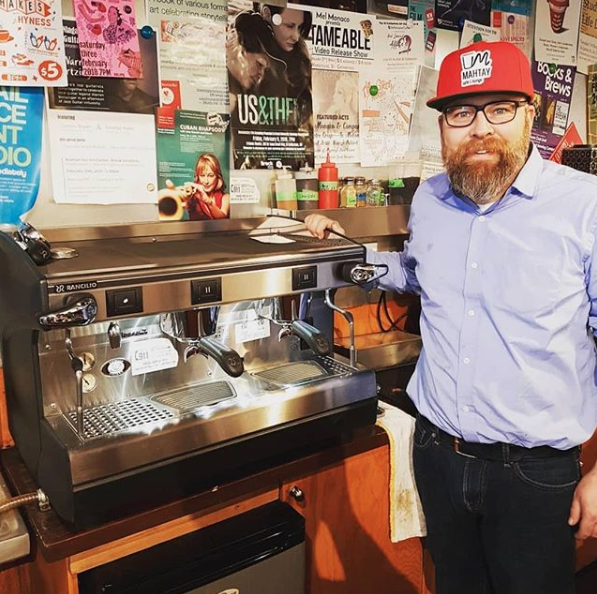
How do you stay current in the industry?
When you’re in the food and restaurant industry you really have to stay current– coffee shops especially. We really pay attention to food trends and staying current with trade shows and industry magazines. People are always interested in what’s new and healthy. So in this particular moment, we’re doing a purple yam latte — an ube (Ouu-bay).
Social issues are also really important to us, so it’s important staying on top of that as well. A lot of that comes from having staff that are savvy. I think this really allows for us to tap into our community.
What is this purple latte you mentioned?
It’s exactly what it sounds like, it’s a purple latte– ube, which is made out of purple yams. It is very popular in Malaysia and has a ton of health benefits. But with this month [September], being a purple month with the Grape and Wine festival, we wanted to tap into the community by doing something creative with that.

What encouraged you to get into the coffee industry?
I come from a construction background, but I always enjoyed the romance style of a cafe. Creative culture always spoke to me and that’s the same environment I wanted to create here.
I’m a very “go-go” kind of person, so the times that I’ve been on vacation have really been the only times when I’ve had the chance to experience cafe life. So that’s why it was always the romance of, “oh remember when went here and hung out at this cafe and people watched?”
So that’s where the inspiration came from. Not so much when I’m at home because I have a wife, kids and a 150-year-old home that demands a lot of attention. So places we experienced all around the world like Brooklyn, the Carolinas and the incredible coffee culture in Europe certainly drew my attention to cafe life.
That’s why we don’t have TV’s in our shop. You can get that someplace else; there are lots of coffee shops that do that really well. But we wanted to create a space where creatives can gather around, talk, eat, and get away from the outside world for a bit.
Is there anything that has encouraged change since you’ve started?
I wouldn’t say that it’s more systematic than what it is symptomatic. When there’s something that needs to be addressed then we’ll do it.
When we first started I would come in on a Sunday and no one would be around, but I told my daughters that if I needed them they would have to jump in. But now that’s totally different. In the fall and winter time, Sundays are our busiest day of the week. So that certainly dictates necessary change.
But on the other hand, we’re always pretty driven so we’re always looking for innovation, new ideas and opportunities.
Recently we bought a coffee trailer which will be our next thing that will allow us to go to events and sell coffee. We’ve been asked to do a lot of corporate events or events at wineries, but not having a mobile unit can be a pain in the neck. So if we have something that is all set with everything you need, all you have to do is pull [the trailer] and drop it off.
From food to coffee, how do you come up with new products?
Everyone here is really bought into what we’re doing. So we’re drawing on our community and our staff to create new things.
They’re always saying, “hey I saw this and we should try that, but what if we did it this way instead?”
Some ideas are more difficult than others but a lot of the time we’ll be open to it an putting our own spin on it.
We tried this one particular drink [ube latte] someplace else so we thought, “hey that’s pretty good why don’t we try that out and make it incorporate something else into it?”. So that’s how the [ube latte] in particular came about.
But demand and always wanting to try and be innovative definitely plays a large role in what we do around here.
How do you look for validation in the products you sell?
That’s a good question, actually.
Customer feedback is always a big one. We have a very chatty staff so that helps us figure out what people like and what they don’t like. So on an anecdotal level that helps us get validation on what products are working and what isn’t.
But of course, sales dictate a lot as well too. If something is still selling strong, we’re of course going to keep it on the menu.
Where does the name Mahtay come from?
Okay, so it’s a phonetic pronunciation of the word “Yerba Mate” (ur-ba mah-tay) which is a South American tea.
When we were first opening up business we really wanted to distinguish ourselves from other coffee shops and Yerba Mate represented what we wanted Mahtay to be about.
[Yerba] Mate is a communal drink that you traditionally put loose leaf in a gord they call a guampa. Then you get a perforated straw called a bombilla. Then you pour hot water in [the gord], you drink it, and then you pass in on to the next person in which they do the same. It keeps getting passed around and often it’s used in a community and the end of the day with family or friends.
That was what we were trying to do with Mahtay. We wanted to connect with the community and we thought this drink really represented that well.
[simple-author-box]
Plastic Alternatives: 10 Easy Options To Start Using Right Now
How To Integrate Plastic Alternatives In Our Day-To-Day Lives
Okay, so plastic is bad. But what are the alternatives? Plastic is everywhere and we need to do something to cut back on our plastic use. Easier said than done though, right?
Here’s a quick guide on what you can to do implement some plastic alternatives in your day-to-day life.
Where Can You Find Alternatives To Plastic?
There are plenty of ways you can reduce how much plastic you use by finding plastic alternatives. We’ve listed 10 options you can try, that fall under four key areas:
1. Plastic Straws
2. Plastic Bags
3. Plastic Wrap
4. Plastic Packaging
Change is good: plastic straw alternatives
Have you been to downtown Toronto recently? You might have noticed a bright orange sign as you make your walk past Union station.
A&W is at it again, but they aren’t walking around offering free teen burgers this time. The brand has displayed a 35-foot-long “Change Is Good” sculpture that is made entirely of plastic straws. 140,000 staws to be exact. This is all part of their initiative to cut back on their plastic use which will keep 82 million single-use plastic straws from ending up in landfills or bodies of water.
That figure right there is why there needs to be plastic straw alternatives. Plastics that are smaller than two inches (i.e., plastic straws) fall through the recycling sorter which is why there is such a staggering about of plastic straws that end up in oceans and landfills.
So what can we use instead?
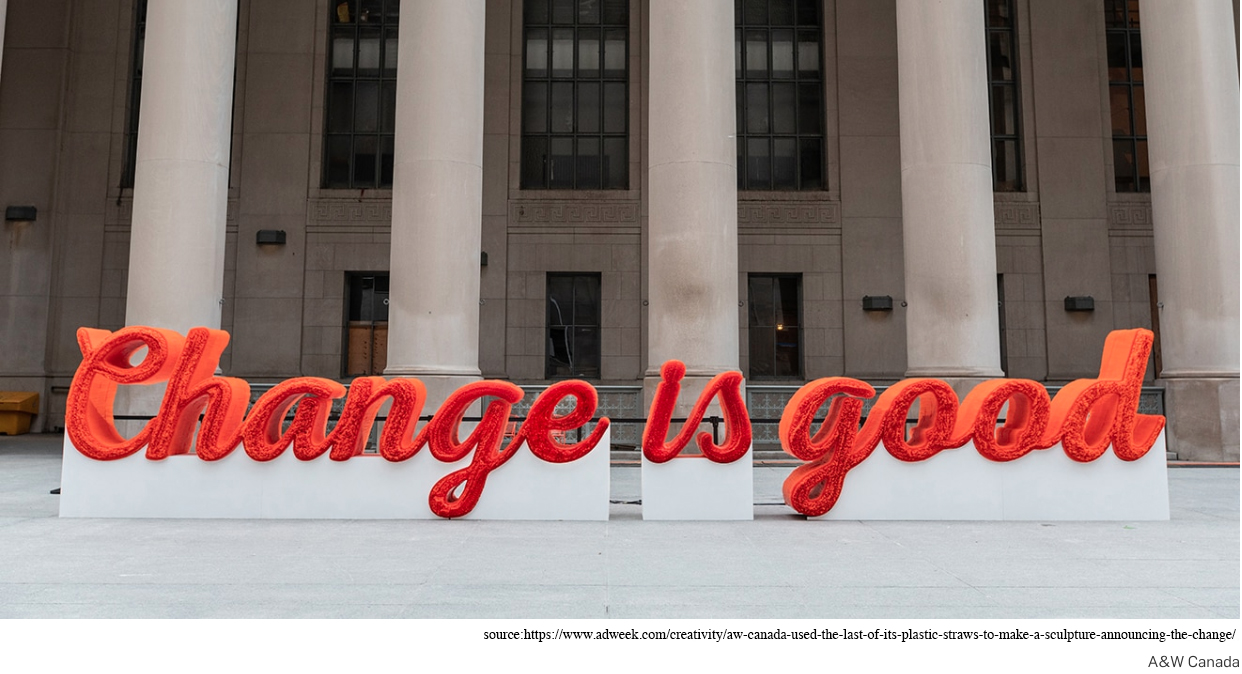
Plastic Straw Alternative 1: Paper Straws
Ah, the simple paper straw. This alternative has perhaps caused just as much controversy as to their plastic counterpart. Yes, they’re a great way to cut back on plastic use but nothing tastes the same when you’re drinking from a paper straw. And not to mention that gross soggy feeling you get when the straw has been sitting in liquid for a while – yuck!
Paper straws have proven to be an effective but not desired plastic straw alternative. When asked about which plastic straw alternative appeals to them most, only 12% of Caddle survey members indicated them as appealing.
Plastic Straw Alternative 2: Biodegradable Straws
Okay, so paper straws are a decent solution but certainly have some cons to them. What about biodegradable straws? This option could prove to be investment-worthy for both consumers and industry leaders.
Biodegradable straws are made up of polylactic acid. Doesn’t sounds to environmentally friendly, right? What if I told you this means that they’re actually made from plant starch and oil that typically comes from corn! Neat eh? What’s good about this is that since they’re made from plant materials, these straws are able to decompose naturally, thus proving to be an effective plastic alternative.
Not to mention, they look, feel, and hold just like a plastic straw would and it doesn’t get all mushy like a paper straw would.
This option of so called ‘eco-friendly plastic’ seems to be a viable one. While only 3% of Caddle survey members indicated that they use biodegradable straws, 18% of survey members indicated that this option appeals to them most.
Plastic Straw Alternative 3: Stainless steel straws
One final option in our plastic alternative arsenal is the infamous stainless steel straw. This option has hit the market in a big way. While it seems to be the most durable and mutually beneficial for the user and environment, there are certainly some drawbacks to this option.
Let’s talk about safety.
First off, sanitary safety. Stainless steel straws are a great idea to have at restaurants or have around the home, but you’re going to have to clean them after every use. We all have different degrees of cleanliness, so what might be clean to someone might not be the same to the other. So this poses an issue.
Secondly, stainless steel absorbs and retains heat. In some cases this is good. But in other cases such as this, you might really regret this purchasing decision. If your drink is scalding hot, be prepared to burn your lips. On the flip side, if you like your drinks cold, be prepared for a quick chill when you bring that straw to your mouth.
From a business standpoint, this option appears to be the most valuable. 21% of Caddle members indicated that stainless steel straws are the most appealing to them.
Plastic Straw Alternative 4: Nothing
This option is pretty self-explanatory. 😉
Alternative to Plastic Bags
How many times have you gone to the grocery store and gone to the checkout line only to remember that you left your reusable bags in the car? I know I’m guilty of it! You can either buy more reusable bags (but you already have more than you need), attempt to strategically carry your groceries without dropping them or… buy yet more plastic bags.
Earth damaging plastic: 1
Best practices to save the planet: 0
Ways to Reduce Plastic Bags
So you’re trying to cut back on your plastic bag use. You’ve got a ton of them at home, you see people using them all the time at the grocery stores, and you see plastic bags floating in the wind getting caught in trees. What do you do?
Here are some quick options:
1. If you don’t need it, say “no thanks” to the sales clerk
2. Try your best to remember to bring your reusable bag
3. Follow a recycling program that takes your plastic bags for you
4. Re-use the plastic bag, they make great lunch bags or recycle bags
Plastic Bag Alternative 1: Jute
Turns out vegetables aren’t just good for you, they’re good for the environment too! Jute is similar to that of cotton and resembles the feel and texture of hemp. This option is a cheap and easily producible option for a plastic bag alternative. When you’re done with it after several uses, throw it in the compost if you want!
Plastic Bag Alternative 2: Canvas bags
This option is certainly the most common option, and why wouldn’t it be? Canvas bags are those bags that you have probably seen at the grocery store. They make quick and easy alternatives to plastic bags. Not only are they reusable, but you can even throw them in the wash if they get a little dirty.
Side note: Don’t want to spend the money on canvas bags but have a ton of old jeans or denim skirts? Sew the bottoms of those suckers and keep the waist open, you’ve got a stylish denim bag!
Plastic Bag Alternative 3: Paper bags
Whatever happened to going grocery shopping and coming home with two huge paper bags full of groceries? I remember seeing this on TV as a kid but never got to live this fantasy, guess it was before my time. For you Ontarian readers, maybe grocery stores could take after the LCBO with their use of the paper bag?
But who’s to stay this option shouldn’t hit the market again? It’s cost-effective, environmentally friendly, and can hold a heck of a lot more than what plastic bags can.
Issues on this option scale from minor to severe. On the less severe side, paper bags are prone to be less effective if you’re carrying the bags in the rain. On the more severe side, a deforestation issue could occur due to rising production in paper products. Then we have an even worse crisis next to plastic pollution.
Alternative to Plastic Wrap
This one stumped me for a while. Plastic wrap has such a convenience to it, but what alternatives (if any) are there that can substitute using plastic wrap?
Maybe I couldn’t wrap my head around it (heh, get it?) but there are quite a few quick and easy alternatives to plastic wrap that I bet you might even have laying around your home.
First up, storage containers such as tupperware and glass jars. They’re quick, they’re simple, and everyone’s got em.
How about parchment paper or aluminum foil? The worst is when you put your food in the microwave and forget to take the plastic off and you end up turning your once edible food into a delicious looking plastic display. Although for cost purposes we don’t suggest keeping the aluminum foil on your food in the microwave. You can certainly do this with parchment paper though!
How are we Going to Cut Back on all This Plastic Packaging?
Now here’s a tough question.
Whether it be the grocery store or a tech store, a lot of our products are kept safe in plastic packaging. Let’s be honest though, we could do away with all that plastic packaging. Especially that tough stuff that takes the jaws of life to open a package – good riddance.
Alternatives to Plastic Packaging
On the consumer side, this is a pretty difficult task. We don’t wrap our products in plastic, we just buy the stuff and throw out the excess.
But finding ways to reduce plastic packaging is key. An estimated 40% of plastic produced is packaging. So this one is on you, company innovators!
One option that seems to be a common trend here is plant-based plastics. This plastic packaging alternative is a simple one that looks and feels like plastic and is easily malleable so it can be turned into any shape. But would this be an effective product packaging both food and tangible products, or just one or the other?
Zero-waste Grocery Stores
While this next option isn’t necessarily an alternative to plastic packaging itself, this idea is one that is making slow progress in the market and has the potential to grow in the industry under the right circumstances.
Zero-waste grocery stores are sparsely spread throughout Canada but offer an environmentally friendly alternative to plastic packaging.
You as a consumer would walk into the grocery store with your own packaging, whether that be tote bags or reusable containers, pick off the shelf an item you want, weigh your items at checkout and go home.
This option is a green alternative and Caddle members indicate that this might be a viable option. 30% of survey members indicated that they have no concerns with bringing their own reusable containers and bags for purchasing food at their local grocery store.
A Viable Solution to Our Plastic World
There you have it. We know that plastic is everywhere and it’s not easy to get rid of it. But there are certainly some plastic alternatives that are easy to use when you take the time and think about it.
Which plastic alternative do you think will hit the market sooner than later and have a positive impact on the environment?
[simple-author-box]
Caddle Ranks in Canada’s Top New Growth Companies for 2019
Caddle named to 2019 Startup 50
Canadian Business unveils 2019 list of Canada’s Top New Growth Companies
ST. CATHARINES, Ont. (September 12, 2019) – Nearly five years after it launched, St. Catharines-based mobile app and research firm Caddle has earned a coveted spot on the 2019 Startup 50 ranking of Canada’s Top New Growth Companies.
Canadian Business and Maclean’s today ranked Caddle No. 35 on the annual list. Serving as a companion list to the longstanding Growth 500 ranking of Canada’s Fastest-Growing Companies and produced by Canada’s premier business and current affairs media brands, the Startup 50 ranks younger companies on two-year revenue growth. Startup 50 winners are profiled in a special print issue of Canadian Business published with Maclean’s magazine and online at CanadianBusiness.com.
Caddle made the 2019 Startup 50 list with two-year revenue growth of 517%.
“The 2019 Startup 50 winners suggest the future of Canadian entrepreneurship is extremely bright. They have brought new offerings to market, created indelible brands and disrupted established business models—all in an extremely short period of time,” says Beth Fraser, Startup 50 and Growth 500 program manager. “Any aspiring entrepreneur should look to their stories for inspiration.”
Since opening its doors in 2015, Caddle has experienced rapid growth in the number of consumers tapping into its app to earn cash and save money on groceries, eating out and shopping by answering surveys, watching ads, uploading receipts, and writing reviews. Companies such as Nestle, PepsiCo., and P&G are a few major brands that have enlisted the company’s help to better understand and reach consumers.
Caddle CEO Ransom Hawley says being named to the 2019 Startup 50 list is a testament to the young company’s drive to succeed in a highly competitive digital marketplace by offering consumers and clients the tools they need for better engagement.
“We’re thrilled to be recognized among some of the fastest growing startups in the country,” he says. “We’re passionate about what we do and everyone on the team has put in a tremendous amount of work to make sure we have a top-quality product, so it’s very rewarding to see that effort paying off.”
Find more information about Caddle at getcaddle.com, on LinkedIn or Twitter at @CaddleCanada.
About the Startup 50
Ranking Canada’s Top New Growth Companies by two-year revenue growth, the Startup 50 profiles the fastest-growing startups in the country. It is a companion list to the Growth 500 ranking of Canada’s Fastest-Growing Companies, which has, for over 30 years, been Canada’s most respected and influential ranking of entrepreneurial achievement. Both the Startup 50 and Growth 500 are published in a special issue of Canadian Business published with Maclean’s magazine and at CanadianBusiness.com. For more information on the ranking visit Growth500.ca or CanadianBusiness.com.
About Canadian Business
Founded in 1928, Canadian Business is the longest-serving and most-trusted business publication in the country. It is the country’s premier media brand for executives and senior business leaders. It fuels the success of Canada’s business elite with a focus on the things that matter most: leadership, innovation, business strategy and management tactics. Learn more at CanadianBusiness.com.
The Caddle Difference
Caddle helps companies like PepsiCo, Domino’s, and Deloitte make better decisions, faster. Caddle is a mobile-first insights marketplace that rewards consumers for engaging with brands on a transparent and privacy-first environment. In return, companies get access to insights and data faster and more cost-effectively than any other platform in Canada.
For more information, please visit getcaddle.com.
Plastic World: The True Impact of Plastic on Our Planet
Plastic World: A place we can’t seem to escape
I come in all shapes and sizes. Sometimes I’m important and other times I’m not. I’m able to live longer than any human. But most importantly, I’m harming the world.
What am I?
If you answered plastic, you’re right.
Our reliance on plastic is having huge consequences for our planet. Across the world, plastic is dumped into the ocean at a rate of 8 million tonnes per year. By 2050, experts estimate that the plastic in the ocean will outweigh the total amount of fish in the ocean.
At Caddle we’ve been taking a close look at the issue of plastic pollution. Over the course of the next while our series ‘Plastic World’ will set out the facts, shed a light on our attitudes, and spark a conversation.
So first up, how did we get to this point?
The arrival of our plastic world
How long does it take plastic to decompose?
Microorganisms and air: the perfect decomposition
The science behind natural and unnatural products
Plastic water bottles are doing more harm than good
Which plastic destiny will you choose?
So, how do we get rid of all this plastic?
The arrival of our plastic world
Though you might think that plastic came to dominate our lives from the second half of the twentieth century onwards, it dates back far longer.
Technically speaking, plastic is a type of polymer, which is made of materials made of long, repeating chains of molecules. Humans have been dated using this naturally occurring polymers since at least 1500 BC with the Olmecs in Mexico.
Plastics as we recognize them today, began to emerge in the 19th century. Then in 1907 Bakelite the first synthetic polymer made from fossil fuels appeared. Soon after came polythene, polystyrene, and nylon.
Plastic is our everyday lives
The uses for these plastics expanded rapidly. From the 1950’s onwards came consumer goods like tupperware containers or plastic drinks bottles. In many cases the switch to plastic offered key benefits – it would be easily shaped to fit the purpose, it was durable (so wouldn’t smash, but could withstand pressure) and it was cheap to produce.
Offering these benefits, plastic became a material that consumed our daily lives in one way or another. About 300 million tonnes of plastic are produced each year. It’s virtually impossible to escape no matter how hard we try.
The durability and low cost of production is a blessing and a curse. For the plastic objects that are meant to last a long time, this is great as it means that we don’t have to worry about replacing them.
On the flip side, the abundance of single-use plastic objects that we have come to depend on are suffocating the planet. It’s as if we’ve put a plastic bag over the earth’s head and it can no longer breath (we don’t suggest you try this at home)
We’ve created a situation where the harm we’ve done has gone too far and is something that the generations to come with have to deal with.
Why is plastic bad?
At the end of the day, what can be said about plastic? Well, simply put, plastic = bad.
The things that make plastic so useful make it an environmental hazard. Its durability means it takes centuries to break down. The low cost means we use a lot of it without worrying even to the point of using a plastic item once and throwing it away.
It is estimated that over 50% of those single-use products are thrown away, leading to a huge build-up of material in landfill and oceans that will not be going anywhere for a long time.
The disposal plastics has played a major role in the growth of several large areas highly concentrated with plastic, including the famous Great Pacific Garbage patch and area that some estimates suggest has swelled to 600,000 square miles.
In turn, plastic affects the environment as a whole in a grand way, not just the oceans alone. In particular, it’s the pesky microplastics that are affecting the environment.
Microplastic: Tiny but deadly
Microplastics are tiny fragments of plastic that are being carried throughout all crevasses around the world. They have been found in the most remote places from the deepest waters to some of the highest peaks.
These microplastics affect marine life as they mistake them for tiny bits of food, which ends up in our bodies as well if we eat seafood. People who eat fish are at risk of consuming 11,000 fragments of plastic each year, according to a recent Belgian study.
Whether its affecting marine life, affecting the environment or human civilization itself, plastic has become a real issue for every form of life.
Stay tuned for this blog to delve deeper into how plastic affects all things involved with the environment.
How long does it take plastic to decompose?
It wasn’t until we really started investigating on this topic that made us realize how long plastic actually takes to decompose. But you may want to think twice the next time you play beer pong. Those red solo cups could outplay you in matches far longer than your life – longer than your children’s children in fact. Certain plastic objects could take a much as a thousand years to break down.
But how do we even know how long it takes for plastic to decompose if plastic has only really been in full production for around 50 years?
Science my friend.
Microorganisms and air: the perfect decomposition storm
If science is good at anything, it’s testing things. And that’s exactly what scientists have done in order to predict how long it takes for plastic to decompose.
When testing normal things like newspapers or banana peels, the waste samples will be placed in a microbe-rich compost which is then aerated. After that, science takes a step back and nature does its thing. The microorganisms come to life and fill their bellies with the waste sample and produce carbon dioxide which serves as an indicator of degradation.
In case you’re wondering, newspapers take two to five months to decompose while banana peels take several days.
So what does that mean for plastic, how long does that take to decompose?
The science behind natural and unnatural products
Remember how science takes a step and nature does its thing when sample waste is placed in the microbe-rich compost? Well, unlike newspaper and banana peels, plastic is far from a natural product. Plastic is made from man-made polymer known as polyethylene which microorganisms don’t attribute to being food.
In order for plastic to decompose it relies on the polyethylene to photodegrade. That is attributed to when ultraviolet radiation from the sunlight starts to breakdown the polymer chains in plastic which makes it become brittle and crack. How long does that take? Science isn’t exactly sure but it suggests that it takes anywhere from 500-1,000 years for plastic to decompose.
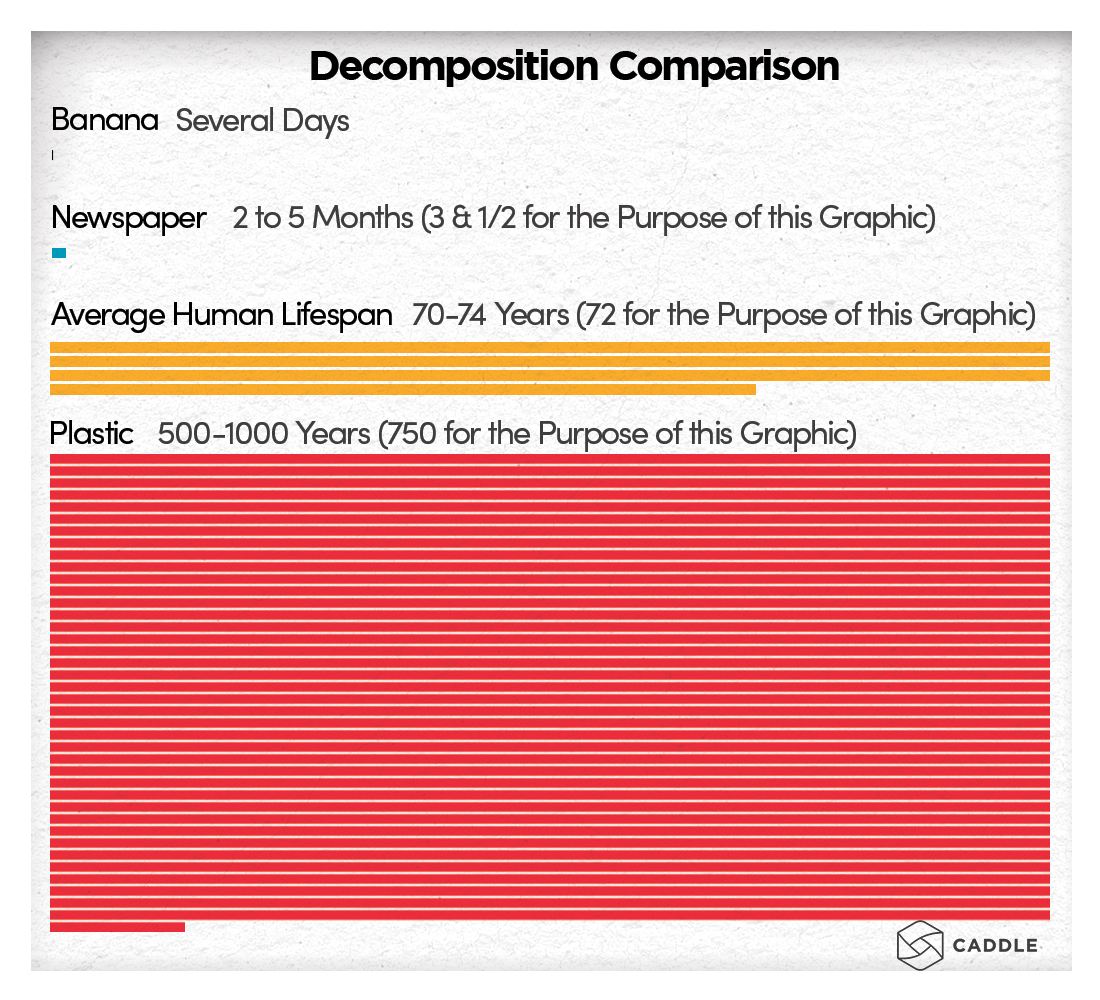
Plastic water bottles are doing more harm than good
All forms of single-use plastic are a large contributor to world pollution but when you sit down and research the effect that plastic water bottles have on the environment, the numbers are quite alarming.
With a million plastic bottles being bought around the world every minute and a 20% increased projection by 2021, plastic bottles themselves have been deemed an environmental crisis that is a large contributor to climate change reports The Guardian.
While plastic water bottles and other bottles alike, they are highly recyclable but due to the high demand that these products bring, it makes actually recycling these products very difficult which results in water bottle pollution in both landfills and the ocean.
Speaking of the ocean, roughly 7% of all recycled plastic bottles were actually turned into new bottles. Instead, between 5 million (yes million) and 13 million tonnes of plastic ends up in the ocean. With plastic bottles in the ocean, this leads to the possibility of fish mistaking the plastic bottles for food, which ends up as food that we eat. It’s the plastic circle of life! Scary, isn’t it?
While recycling plastic water bottles is an easy task since they’re highly recyclable, they’re made of a similar polyethylene product as other single-use plastics. Therefore, it’s easy to conclude that it would take roughly 500-1,000 years for a plastic water bottle to decompose.
Which plastic destiny will you choose?
Like it’s been mentioned throughout this blog, plastic is everywhere. But plastic doesn’t have to be the go-to source when it comes to everyday products that we use. Yes, some plastic alternatives might not be as ideal as others or don’t have the same ease of usability that plastic offers, but the choice is yours: save the planet from setting itself on fire or using a paper straw that makes your pop taste a little funny.
Regardless, action needs to be made for an alternative to single-use plastic products that we use and some initiatives have been set forth in order to reduce our plastic use.
So, how do we get rid of all this plastic?
Have you been to A&W lately for a classic rootbeer float or any drink that involves a straw for that matter? Their initiative to reduce and implement a plastic alternative was one that made national news. In an effort to display their decision to cut down on plastic waste, A&W Canada created a 35-foot-long “Change Is Good” sign that was made from 140,000 plastic straws that were remaining in the brand’s stockpile. By using paper straws as a plastic alternative, A&W Canada predicts that this effort will keep 82 million single-use plastic straws from ending up in landfills and bodies of water.
Plastic straws aren’t the only alternative to plastic though. Many consumer packaged goods industries have recognized the importance of finding a plastic alternative and have changed many of their products from packaging, bags, and plastic wraps.
But what about the single-use plastic that is already floating around your home? Well, you don’t necessarily have to make a huge art sculpture but there certainly are some ways DIY projects that you can do at home to find other alternatives for your plastic use.
But not every alternative is perfect. There are some products that appear to have a short term benefit but could end up hitting a roadblock later on down the road that could further contribute to environmental catastrophe.
Stay tuned for this blog to find out more.
Plastic Straws: Canada takes action
To deal with the issue of plastic, world leaders and governments are beginning to take action albeit slowly. For example, here in Canada, the Government is looking at the issue of plastic straws.
It’s fair to say that plastic straws are pretty bad for the environment. Likely you’ve seen the plastic straw being removed from the sea turtle (watch at your own discretion). Despite how alarming that video may be, it really sets the stage for why plastic straws are bad. Plastic straws are perhaps the quickest single-use plastic there is which ends up in landfills and oceans that cause harm to all forms of wildlife.
The action on plastic straws Canada plans will tackle more than just what you drink your frappuccino through.
While there is going to be an implemented single-use plastic ban which includes straws, bags, and other single-use products, this initiative won’t be legislated until 2021. That isn’t to say that Canada hasn’t made efforts to reduce plastic straws or other plastics alike. Prime Minister Justin Trudeau has encouraged leaders to sign a zero-waste plastics charter which would be an attempt to reduce plastic waste from ending up in the oceans.
Wrap up
So what is your stance on the plastic dilemma? Is this a crisis that has gone way past our capabilities of solving the problem or with the right frame of mind we can all tackle this issue and help create a greener planet?
With the help from your survey answers, further research and industry reports, these are all topics and questions that we were able to answer. We hope that it creates awareness and discussion on how we can unwrap this plastic world and let the planet breathe in some fresh air.
